Spotlight: Mystery & Sci-fi Author Lance S. Barron
Today's showcase and interview spots a light at Mystery & Sci-fi writer Lance S. Barron, author of The Longest Dark: Mammoth Cave Guide series!
Hello, and welcome to today’s author spotlight! This time we’re going deep into the crevices of who Lance S. Barron is, and the stories he’s written. As a writer with seventeen years under his belt, his series The Longest Dark: Mammoth Cave Guides draws heavy inspiration from his time as a tour guide.
Also, many thanks to Lance for allowing me the honor of doing this spotlight! It’s always great getting to learn about the authors in our community, and this has been no exception.
Lastly, if you’d like to support Lance, you can find his books over on Booklocker or Amazon. He’s also one of our featured authors in our directory, which you can look at here. Now… without further ado, it’s time to explore today’s Spotlight.
After growing up amongst the pine hills and whisky stills of north Louisiana, Lance S. Barron finished his four-year enlistment in the U.S. Air Force in April 1976. That June he began the best job of his life: seasonal cave guide at Mammoth Cave National Park. For two summers and a couple of holidays, Lance guided, and mostly trailed, visitors through what were then known as the self-guided Historic, the Scenic tour and the Frozen Niagara tour in Mammoth Cave, the longest, known cave in the world with over 426 miles (and growing) of mapped passages.
His masters degree in Geology from the University of Kentucky enhanced his fascination with limestone. While there, he caved in Central Kentucky, the Bluegrass, and Tennessee. Over the years, Lance has maintained friendships with his former fellow guides that have informed and inspired these stories.
He is a member of Sisters in Crime Atlanta Chapter along with Friends of Mammoth Cave.
He lives in Marietta, Georgia, with his best friend and wife, Barbara.
Below are some questions Lance answered for the Spotlight.
What is the writing process like for you?
My writing process has scattered all over pantsing versus plotting. Even when plotting (my latest approach), I don’t see the outline as iron-clad and follow where the stories lead, keeping the end in sight. I like the James Michener approach of starting with “...the seas came in, the seas went out.” However, those long introductions wind up getting cut, but I still like to write them.
How do you get inside your characters' heads?
I write in third person from the protagonist’s point of view. In my first book, Dark Are the Steps of Time, two characters occupy two different times, and I write different chapters for each character. In a few scenes and chapters, I have written from other characters’ points of view. Yes, I am mostly inside the heads of a few characters. The story runs through my head like a movie. Sometimes too fast to catch all the details.
What drew you to your genres?
My science fiction fascination dates from reading Robert A. Heinlein’s Have Spacesuit Will Travel in the eighth grade. The mystery interests date from reading Sherlock Holmes when I should have been in freshman chemistry.
What does your relationship with "Writer's Block" look like?
To paraphrase a favorite movie character, there is only writing and revising, there is no waiting. Except for eight or nine months when I was in a morning writing group, I have not written on a schedule. Someone has said that the muse doesn’t always come, but when it does, you should be there, implying that you should be in your writing place on a regular schedule. This is great advice. I just can’t make it work for me.
When you're writing difficult or emotional scenes, how do you prop the mood?
Nothing external to prop the mood. I’m inside the cave in my head and in the heads of the characters. I see what they’re going through in the cave in a physical sense and in their heads with emotional and traumatic events. However the steely eyed calm of cave guides keeps a lid on a lot of emotions. External influences would only distract me from the story.
Below is an excerpt Lance included for the showcase.
What was the most difficult part of getting a book published or self-published?
I tried the traditional publishing route for a relatively short time. A friend from the Air Force had self-published his memoirs of his service years through Booklocker.com. So, I gave them a try, and have been very happy. The hardest part was dealing with self-inflicted errors that I discovered only after receiving the review copy of the book.
How do you process and handle receiving negative reviews or comments?
A well-known author said that it took him 15 books to discover he was a bad writer, and by that time, it was too late. I found out sooner than he did. Dwelling at the bottom of the Amazon ratings, I haven’t had many reviews, but those few have been extraordinarily nice. Comments from agents or well-known authors have been rough, but I’ve always tried to learn from their comments and improve the story.
What is a piece of advice you've received which has helped propel your writing forward?
You have to write the story first. As a famous author said, “The first draft is you telling the story to yourself.” It’s nothing until you get it out of your head and onto the paper/screen. Therefore write it quickly, write too much, and don’t look back until the end (unless you get completely lost).
Without spoiling your books, is there a character you've written you relate to most? How has it evolved your writing?
I based the main character, Bob, a Mammoth Cave interpretive ranger and cave guide, on a close friend from my guiding days. He let me help out with after-hours photography trips into the cave and has remained a life-long friend. The character arc for Bob has transformed from classic, interpretive cave guide to amateur sleuth, but over the three books of the series, he moves away from guiding to more of a liaison between cave visitor management and special events in the cave. And, of course, he has aged, and his ability to walk miles through the cave becomes reduced, but he keeps moving. Slower than he was, but still moving.
Is there anyone who inspired you to write your books?
I dabbled in writing fiction beginning in my early college years. I didn’t begin seriously considering writing a novel until 2008, when a close friend from Georgia Shakespeare Festival, Thomas Pinckney, challenged my wife Barbara and me to enter National Novel Writing Month. I was the only one who followed through with about 35,000 words, but enough to convince myself that I could actually do it. Maybe not well, but I could string the words together.
And do you have any reading recommendations?
CJ Box’s Joe Picket series
John Gilstrap’s Jonathan Grave series
Thursday Next series by Jasper Fforde.
Is there anything else you’d like to include that we haven’t covered in the Spotlight?
Mammoth Cave was visited by members of the Adena Culture thousands of years before the present. They scraped gypsum crystals from the walls of the cave, but anthropologists have never learned what they used gypsum for. During the War of 1812, enslaved workers mined and leached calcium nitrate from the cave dirt to be converted to saltpeter used in making black powder for the war effort.
Based on publicity from those actions, Mammoth Cave became famous--the second oldest tourist attraction after Niagara Falls. From 1816, enslaved people and later federal employees guided interested visitors through the longest cave in the world. With this long history and after all these visitors, there have been no historical records of time travel, biological terrorism, or murder in Mammoth Cave--until these three books came out.
In this section we’ll be going through Lance’s work, and social links. Synopsis for each book or series is pulled from their webpage.
When the pharmaceutical giant PharmARAMA sponsors Mammoth Cave National Park, a former seasonal cave guide dreams that the cave is in distress and calls him to come immediately. Walt and Barbara visit Bob and Zona in Cave City, Kentucky, where Bob will take Walt on a tour of the cave to assess the threat from PharmARAMA. Before they can get to the cave, Bob is drafted to replace a missing cave guide Bill. While Walt hitchhikes on Keven’s Historic tour, jumps to walk the Lantern tour alone, and hitches up with Bob at the end of his Historic tour, he unknowingly sees clues regarding Bill’s disappearance. Bob pulls all the clues together and leads the small crew to find Bill before the rogue research director for PharmARAMA can do away with him.
Once rescued, Bill reveals that he is working undercover for the Army’s infectious disease research group and that W.G. Anderson is planning to steal a dangerous, gene-splicing bacterium from under the noses of the Park Service and PharmARAMA. Drugged, dehydrated, and concussed, Bill is in no shape to thwart the theft alone. The team organizes support for Bill’s operation in advance of the too-late arrival of Bill’s Army unit. Can a group of former guides, nearly retired guides, spouses, and friends catch the PharmARAMA research director red-handed?
Once again, thanks to Lance for allowing the opportunity to spotlight him and his work. Doing this has been a pleasure, and just… honestly, like such a fun experience. And again, for anyone who’d like to support him: You can find Lance over at his author page on Amazon.
Thank you to each and every one of you, too! Sticking all the way through and showing your support— well, it means a lot! I hope you enjoyed today’s spotlight, and we’ll see you in the next one. Buh-bye!



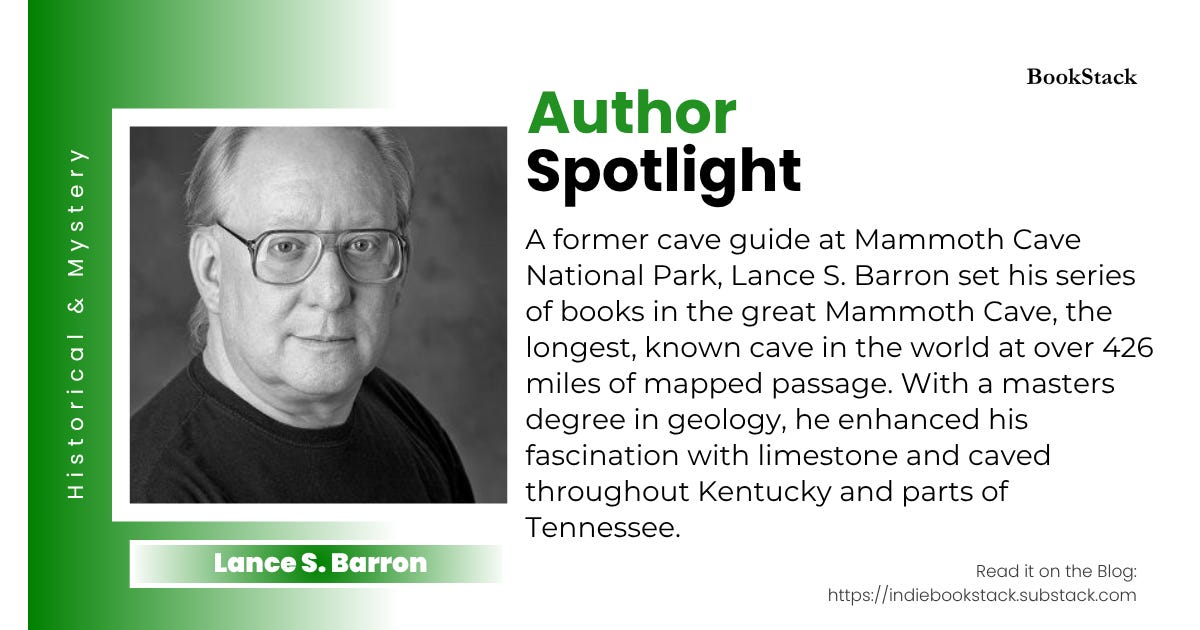

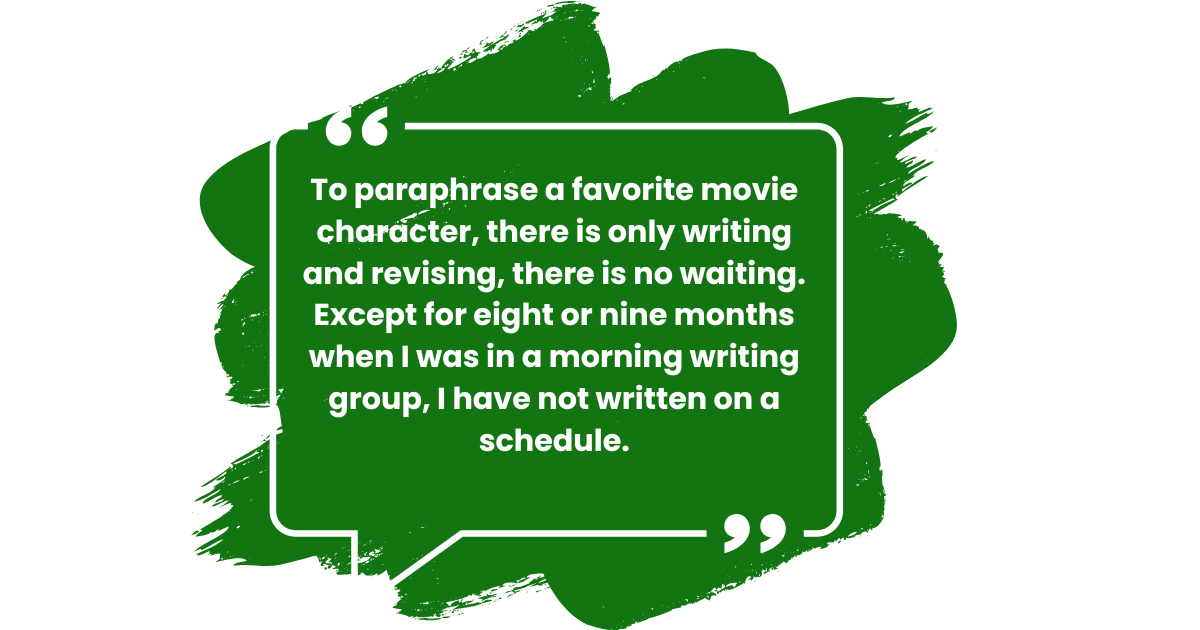
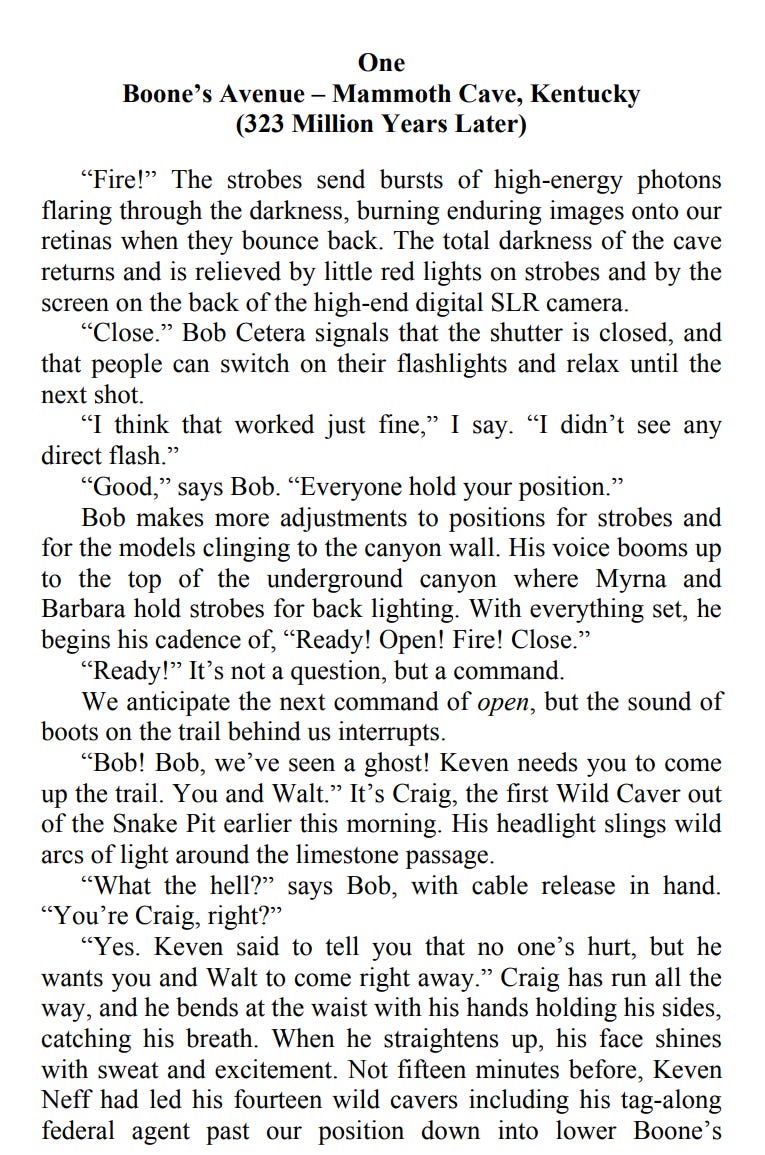
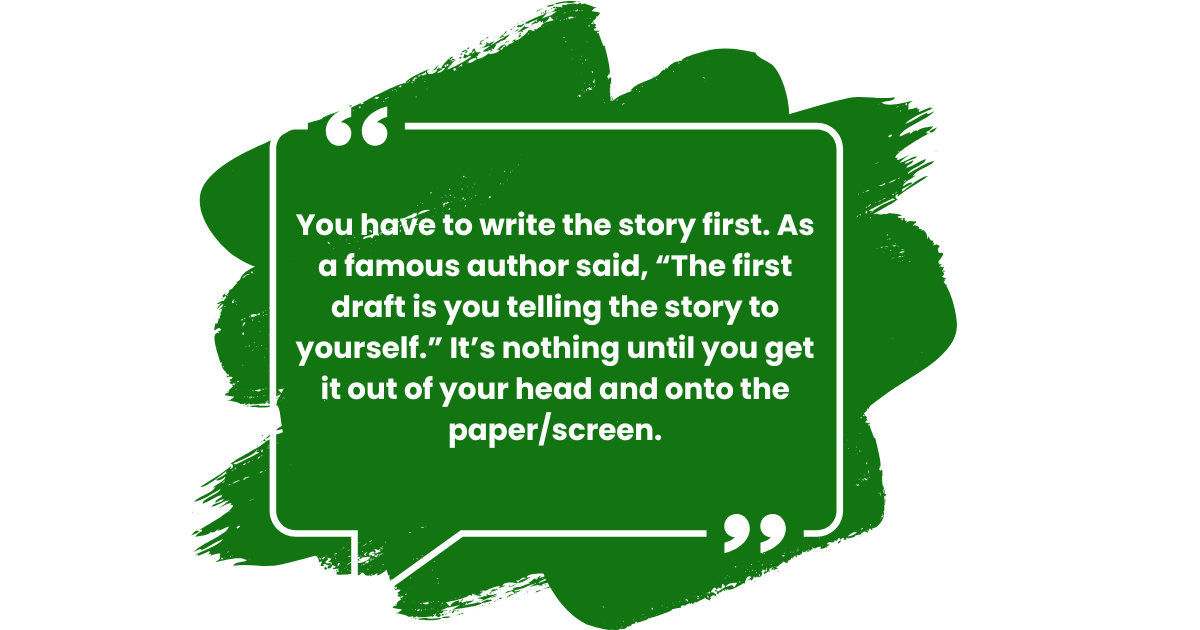

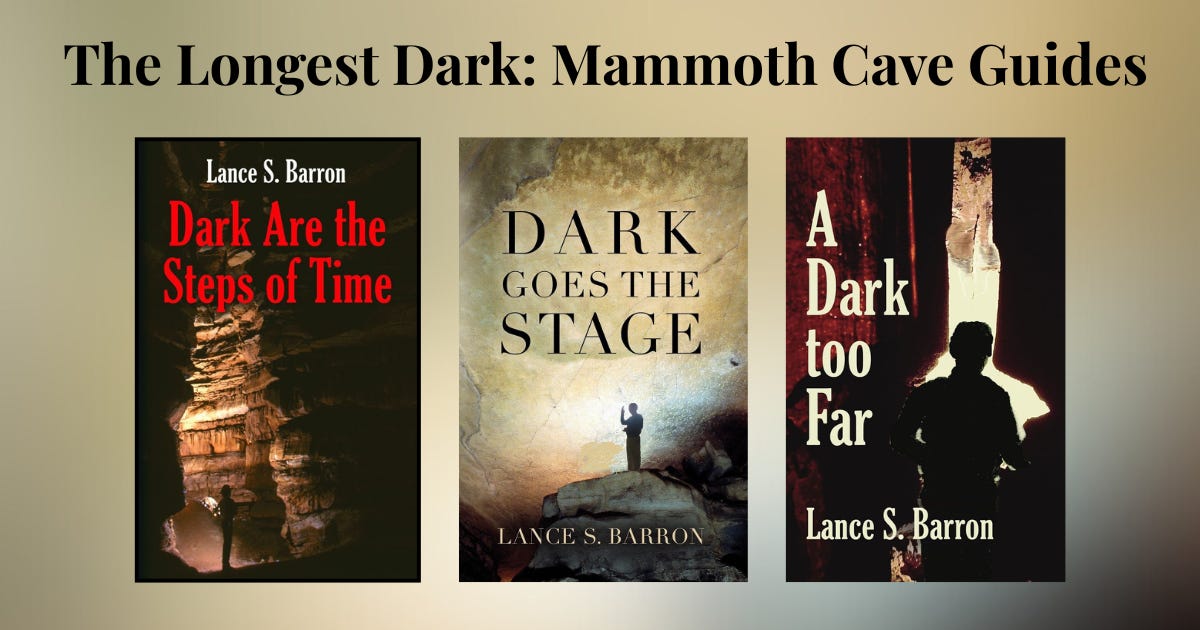
This was great: "...there have been no historical records of time travel, biological terrorism, or murder in Mammoth Cave--until these three books came out." I liked the comment that the first draft is you telling yourself the story, and I have to agree. Like, you know the story, but you only know some of it, and as you're writing it down, the parts of the story you didn't know are told. I like to say, 'I write because I wanna what happens, too.'